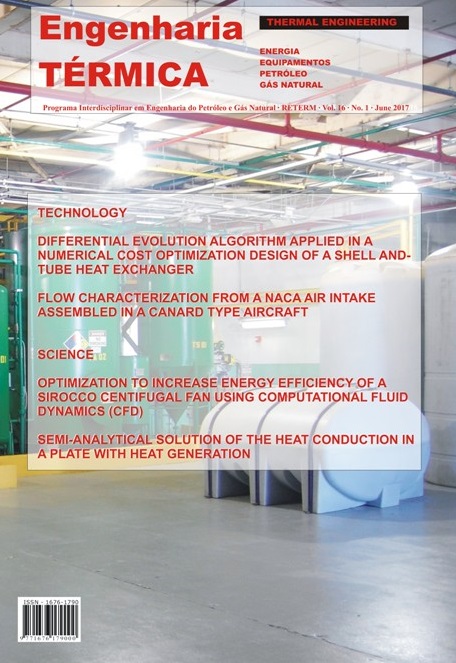GEOMETRIC EVALUATION OF T AND H-SHAPED CAVITIES INSERTED IN A SOLID WITH HEAT GENERATION APPLYING CONSTRUCTAL DESIGN
DOI:
https://doi.org/10.5380/reterm.v16i1.62197Keywords:
Constructal design, T-shaped cavity, H-shaped cavity, numerical study, FEMAbstract
In this work, the influence of geometry on the behavior of the temperature field in a square plate with T and H-shaped cavities is studied. The ratio between the cavity area and the plate area will be kept constant and its geometry will be varied in order to find the optimum geometry (the one that results in the temperature field with the lowest maximum temperature). The cavity will occupy 10% of the area of the plate and will be varied from the T-shaped configuration to the H-shaped one. According to the Constructal Design principles, the degrees of freedom of the problem and its restrictions will be defined. The height of the initial T was selected as H1, where H1/L1 is one of the degrees of freedom for the problem. The second degree of freedom is the ratio H2/L2, the ratio of height by the width of the first bifurcation, and the other geometric ratio (H3/L3) is the ratio of height by the width of the second bifurcation and is a function of H1. For the simulations, a code based on the Finite Element Method (FEM) was used to solve the energy conservation equation. The results showed that it is possible to minimize the maximum excess temperature by 54.4% when an H-shaped geometry with irregular legs is used compared with the T-shaped cavity. In order to reach the optimum geometry, H1/L1 was reduced by 68.37%, and H2/L2 was increased in 64.71% when compared to the initially proposed T-shaped cavity.
Downloads
Published
How to Cite
Issue
Section
License
Direitos Autorais para artigos publicados nesta revista são do autor, com direitos de primeira publicação para a revista. Em virtude da aparecerem nesta revista de acesso público, os artigos são de uso gratuito, com atribuições próprias, em aplicações educacionais e não-comerciais.



